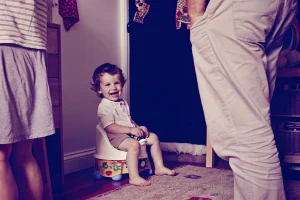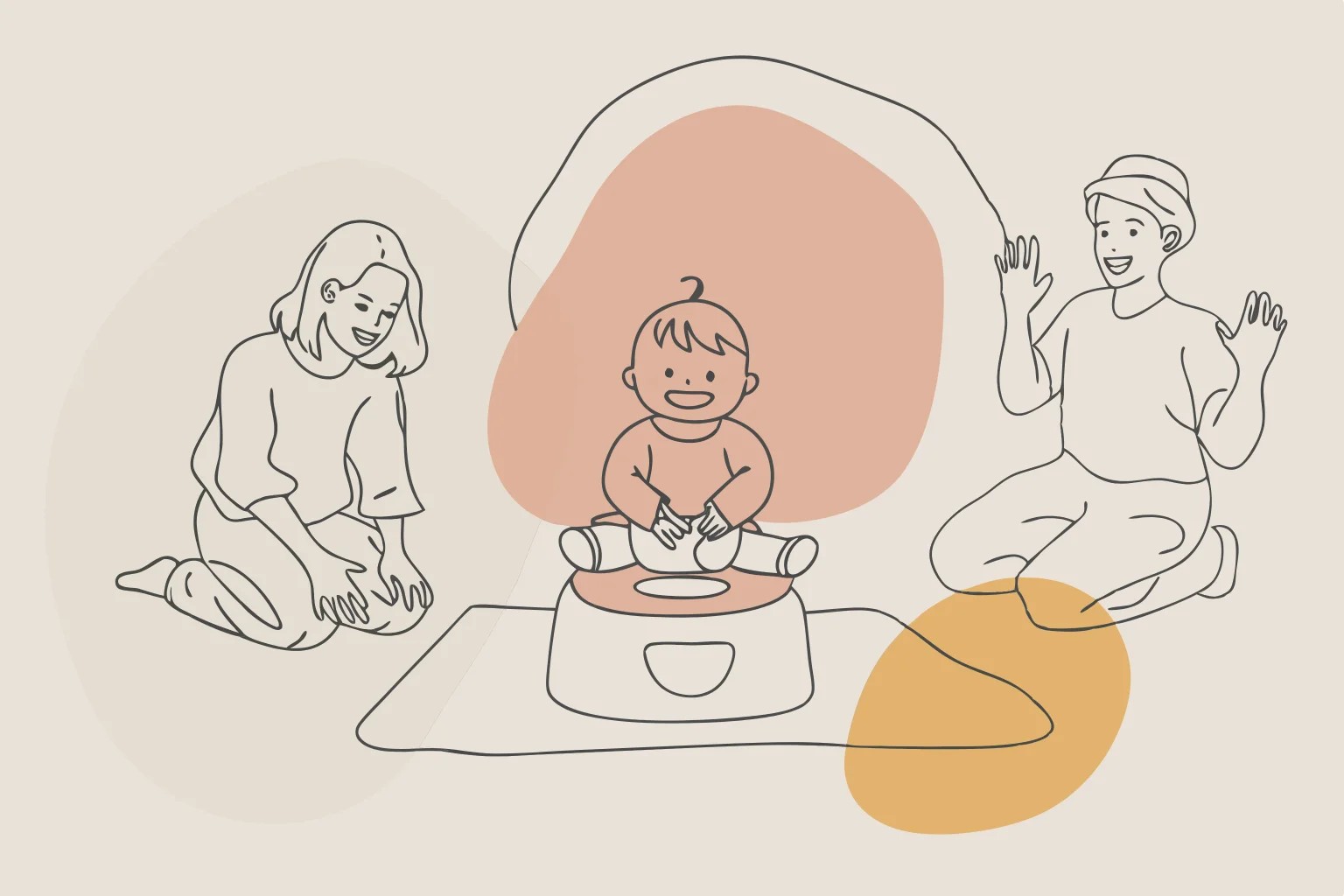[ad_1]
Potty training is often one of the most daunting tasks for parents, filled with a blend of anxiety, anticipation, and the occasional giggle. The journey from diapers to the potty can feel like an uphill battle, characterized by accident after accident, and a plethora of advice—some useful, some not so much! But fear not, fellow parents! The transition doesn’t have to be this monumental struggle. With the right techniques and a little bit of patience, you can turn this challenge into a fun and successful milestone.
In this article, we’ll explore effective potty training methods that will help make the process smoother for both you and your little one. Whether you’re at the beginning of your journey or smack-dab in the middle, you will find practical tips, common challenges, and expert strategies that will empower you to guide your child from diapers to the potty confidently.
Understanding the Basics of Potty Training
Potty training is essentially the process of teaching your child how to use the toilet instead of relying on diapers. Although it seems simple in theory, it involves physical, emotional, and developmental components that can vary greatly from child to child.
Typically, children begin showing signs of readiness for potty training somewhere between 18 months and 3 years old. Signs include staying dry for longer periods, showing interest in adult bathroom habits, or even expressing discomfort in dirty diapers. Recognizing these signs is critical; launching potty training before your child is ready can result in frustration for both of you.
The first step is understanding that potty training isn’t just a physical skill; it’s also about creating a positive emotional connection with this new process. This foundational understanding sets the stage for a successful transition.
Key Benefits of Potty Training for Parents and Children
Potty training is not just a rite of passage for your child; it comes with numerous benefits for both of you. Here are some major advantages:
-
- Cost Savings: Diapers can be expensive. Once your child is potty trained, you can significantly reduce the family budget as you’ll no longer need to buy diapers and wipes regularly.
-
- Environmental Impact: With millions of diapers ending up in landfills, transitioning to the potty reduces waste and contributes to a healthier planet.
-
- Increased Independence: As your child learns to use the toilet, they gain a sense of autonomy, empowering them to do other tasks independently, which can boost their confidence.
-
- Improved Social Interactions: Once potty trained, your child will feel more comfortable at playdates, daycare, or preschool, where many facilities won’t accommodate diaper-wearing children.
-
- Free Time for Parents: Remember the days of constantly changing diapers? Once your child is potty trained, you’ll find you have more time available for other activities, whether that’s quality family time or enjoying a quiet moment to yourself.
Common Challenges with Potty Training and How to Overcome Them

Like any developmental milestone, potty training comes with its set of challenges. Here are some common hurdles and how to overcome them:
-
- Resistance and Fear: Many children are apprehensive about using the toilet. They may fear the flush, feel overwhelmed by the new experience, or resist change altogether. Solution: Use fun, engaging books or videos about potty training to ease their worries. Take it slow, and let them express their feelings openly.
-
- Accidents Happen: It’s normal for mishaps to occur—even with the best of preparations, accidents will happen. Solution: Remind yourself and your child that accidents are part of the learning process. Use positive reinforcement when they do succeed, and respond kindly to accidents to avoid feelings of shame.
-
- Inconsistent Practices: Different caregivers may use various techniques, confusing your child. Solution: Establish a consistent approach to potty training across all caregivers in your child’s life—use the same terminology, routines, and encouragement.
-
- Regression: Sometimes, a child may be fully trained and then regress due to stressors like moving, a new sibling, or starting school. Solution: Be patient and understanding. To re-establish their comfort, revisit some of the initial steps and positive reinforcement techniques you used during training.
Expert-Recommended Potty Training Strategies
To make your potty training journey smoother, consider these expert-recommended strategies:
-
- Choose the Right Time: Look for signs of readiness and choose a week when you can focus on this process. Avoid stressful periods.
-
- Create a Routine: Establish a set schedule for potty breaks—after meals, before bed, or every hour during the day can work well.
-
- Use Positive Reinforcement: Celebrate your child’s successes with high-fives or stickers. Positive feedback encourages them to repeat the behavior.
-
- Make It Fun: Turn potty training into a game. Try using fun, colorful training potties or implement song and dance when they successfully use the toilet.
-
- Offer Choices: Empower your child by allowing them to choose between options like which underwear to wear or if they want a potty or a seat for the toilet.
-
- Be Patient: Every child learns at their own pace. It’s essential to remain calm and patient throughout the process, celebrating small victories as you go.
Essential Potty Training Tips for Different Age Groups
Not all children are created equal, and their readiness can vary. Here’s how to tailor your approach based on age:
For 18-24 Months
-
- Introduce the potty in a relaxed setting.
-
- Use potty training dolls or storybooks to make the concept relatable.
For 2-3 Years
-
- Test for readiness and start a routine.
-
- Consider “potty parties” to reward successes with praise and treats.
For 3 Years and Up
-
- Encourage independence, letting them choose when they want to use the potty.
-
- Address any underlying anxieties through open discussion.
Making Potty Training Work for Your Family
Each family is unique, and your potty training strategy should reflect your dynamics. Consider:
-
- Incorporating Routine: Align potty training with other daily routines like meals or baths. Kids thrive on consistency, so timing helps foster good habits.
-
- Encouraging Sibling Involvement: If you have older children, involve them in the process. Let them demonstrate how they use the toilet or read to their younger sibling from potty books.
-
- Adapting to Individual Agendas: Some children may need more downtime between successes, while others thrive on a fast-paced approach. Adjust based on your child’s temperament.
When to Seek Professional Help with Potty Training
While most children adapt to potty training without major issues, sometimes it’s worth consulting a professional. Here are a few signs that may indicate seeking help:
-
- Age-Related Delays: If your child is over four years old and still resists toilet training, it might be time to seek advice.
-
- Persistent Regression: If your child has been trained and suddenly starts having accidents regularly, consider talking to a pediatrician.
-
- Physical Discomfort: Signs of pain while trying to urinate or defecate can indicate underlying conditions that need professional assessment.
Final Thoughts on Potty Training
Potty training can feel overwhelming, but remember, it’s a normal part of child development that eventually comes to fruition with consistency, patience, and love. Approach the process with a positive mindset, focusing on celebrating small victories while navigating setbacks.
By utilizing the strategies and tips mentioned in this article, you can facilitate a smoother transition from diapers to the potty. Embrace this journey, as it not only symbolizes your child’s growth but also brings a wave of freedom for you as well! So, gather your supplies, put on that encouraging smile, and get ready to make potty training a breeze!
Are you ready to take the plunge? Gear up and prepare for this exciting chapter as you and your little one make strides toward bathroom independence!
[ad_2]


